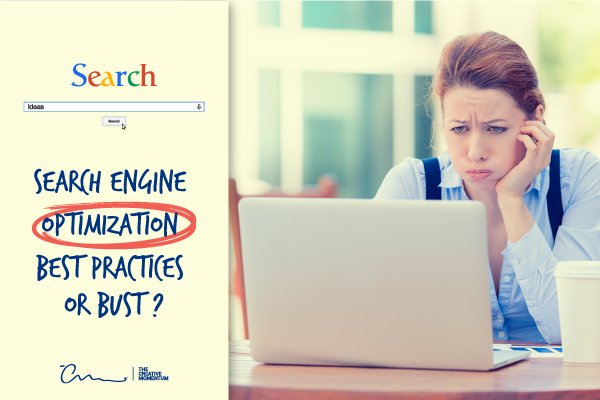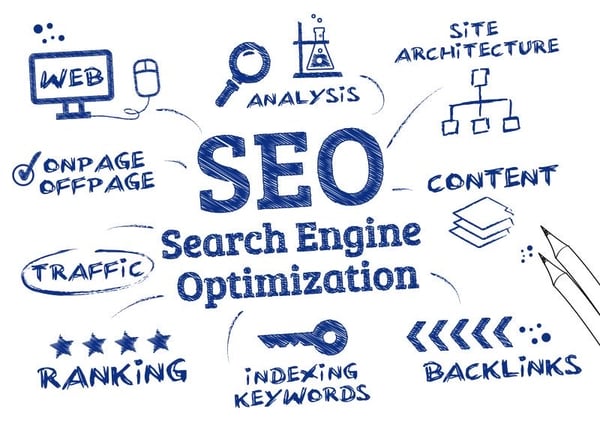 Something mentioned a lot in web design communities is the idea of SEO best practices. There is an entire subculture of the technology world dedicated to figuring out how the algorithms that Google employs categorize and prioritize search results.
Something mentioned a lot in web design communities is the idea of SEO best practices. There is an entire subculture of the technology world dedicated to figuring out how the algorithms that Google employs categorize and prioritize search results.
However, many have wondered if the race to try to beat Google at its own game, a game for which they write the rules, has gone too far. Let’s take a look at whether the pursuit and adherence to SEO best practices is worth your time—or if the whole thing has become a bust.
What Are Search Engine Optimization Best Practices?
The basic idea behind the use of SEO best practices is to figure out what gives a webpage the highest organic ranking on a search engine results page and then to put those concepts to use. Some of the metrics that web designers track in order to boost those results include:
- Keywords
- Character counts
- Backlinks
- Page title length
- Click-Through Rate
Designers have been tracking the impact of these different factors and have created detailed use cases to help their sites reach a larger audience. These best practices are subject to almost constant change, however. As soon as designers find and identify algorithmic consistency, Google modifies its process to keep best practices from skewing search results.
Benefits of SEO Best Practices
The use of SEO best practices has been a source of great attention for designers and content creators over the last decade. An overreliance on what were once thought to be best practices, such as keyword stuffing, led to misleading site design that was eventually punished by Google’s algorithm.
Today, best practices are seen as positive factors that build organic websites and help bring value to their audience. Responsible backlinking and balanced keyword use help visitors find the information they are looking for. Google’s improved algorithms boost results for the sites with strong content.
Beyond that, the use of SEO best practices provides a level of comfort for web page designers and their clients. Sensible use of best practices gives a reliable boost to a site ranking, gives creators a guide to deliver a solid structure, and gives clients confidence that the site they’ve paid for will receive hits.

Weaknesses of SEO Best Practices
However, the blind pursuit of these guiding principles has created some problems. The primary problem with trying to design a website from the information offered from SEO gurus is that no one knows what the algorithm used by any search engine really is. The only people who do are the designers inside those companies, and they are not sharing that information.
This means that the entire concept depends on speculation, hearsay, and laborious processes of testing and validation that few companies have the time to do.
The second problem comes from designers who don’t understand that the principles that SEO practitioners use to guide their work are not really rules. They are, at best, educated guesses. Web design firms that follow these rules to the letter may not be adding much value to their ultimate product.
Biggest Misconceptions of the SEO World
To that end, let's review the most common misunderstandings people have about optimizing websites.
Backlinks Are All That Matter
There is no denying that links, and backlinks in particular, are important to SEO. Backlinks create pathways for the bots that are behind Google’s algorithm to map and rank sites.
However, there has been a misconception of the ultimate importance of backlinks and the harm that overdoing backlinks can have on a website’s ranking. Google has stated that links are based on merit, and links that come from low-quality origins will be in violation of that policy. This is one reason that there’s a disavowal tool—to help remove links that are in violation of Google’s policy.
However, overuse of the disavowal tool can be harmful as well. In the wrong hands, years’ worth of networking and backlinking can be lost.
Copy Length Minimums
Another myth regarding SEO best practices that has become muddled is the idea of minimum copy length for content that doesn’t necessarily need it. There are certain experts who say that the minimum length of content is 2,000 words! That can be a lot of content, depending on what kind of service a website is offering.
Google is capable of pulling information out of web addresses with relatively little content if it contains the best information. For example, the top result for a local weather search may have fewer than 50 words of actual content on the site. But it does have the weather, which is the information that Google knows its users want to find.
Meta Title Length Maximums
On the other end of the spectrum is a misconception of the maximum number of characters used in fields such as the meta title. A common assumption is that if designers use more than sixty characters in the meta title, Google will fail to recognize important keywords and rank it lower.
However, Google’s own advice on the subject states that designers should avoid verbose titles only because the results are clipped if they are too long. There is no character maximum and some designers have even suggested that truncation depends not on character limit but on pixel limits. That means that titles that use thinner characters are given ellipses at a later point.
It’s important to remember that Google will still read the entire meta title after truncation, and this is a best practice that may be a good idea but doesn’t need to be followed exactly.
Use SEO Practices as a Guide
While we don’t need to throw SEO best practices completely out the window, your web page design and construction will benefit if you remember that these best practices are a guide, not ironclad rules. Stick to your instincts and focus on creating the best possible content for visitors to help your site achieve high search engine results.


